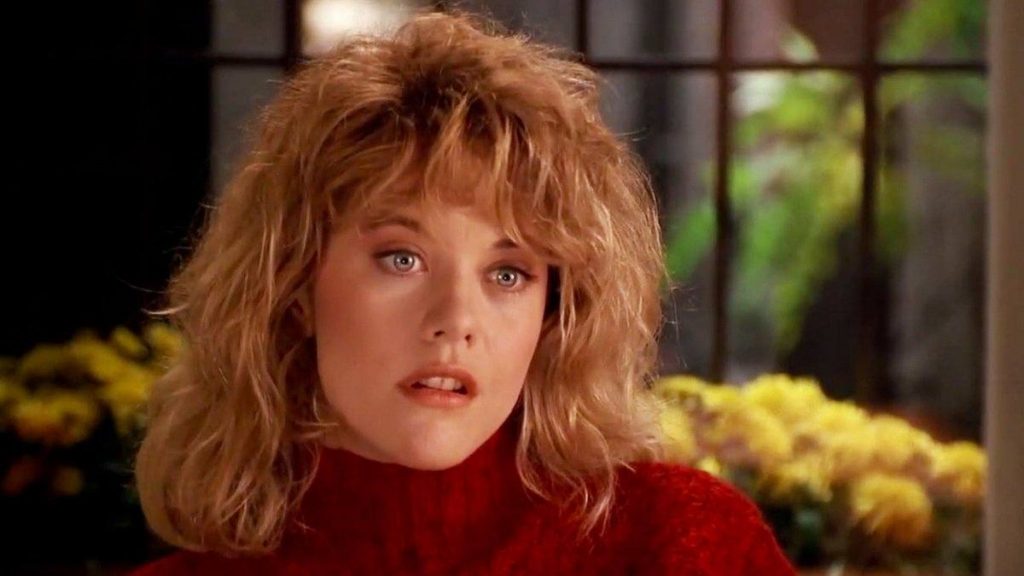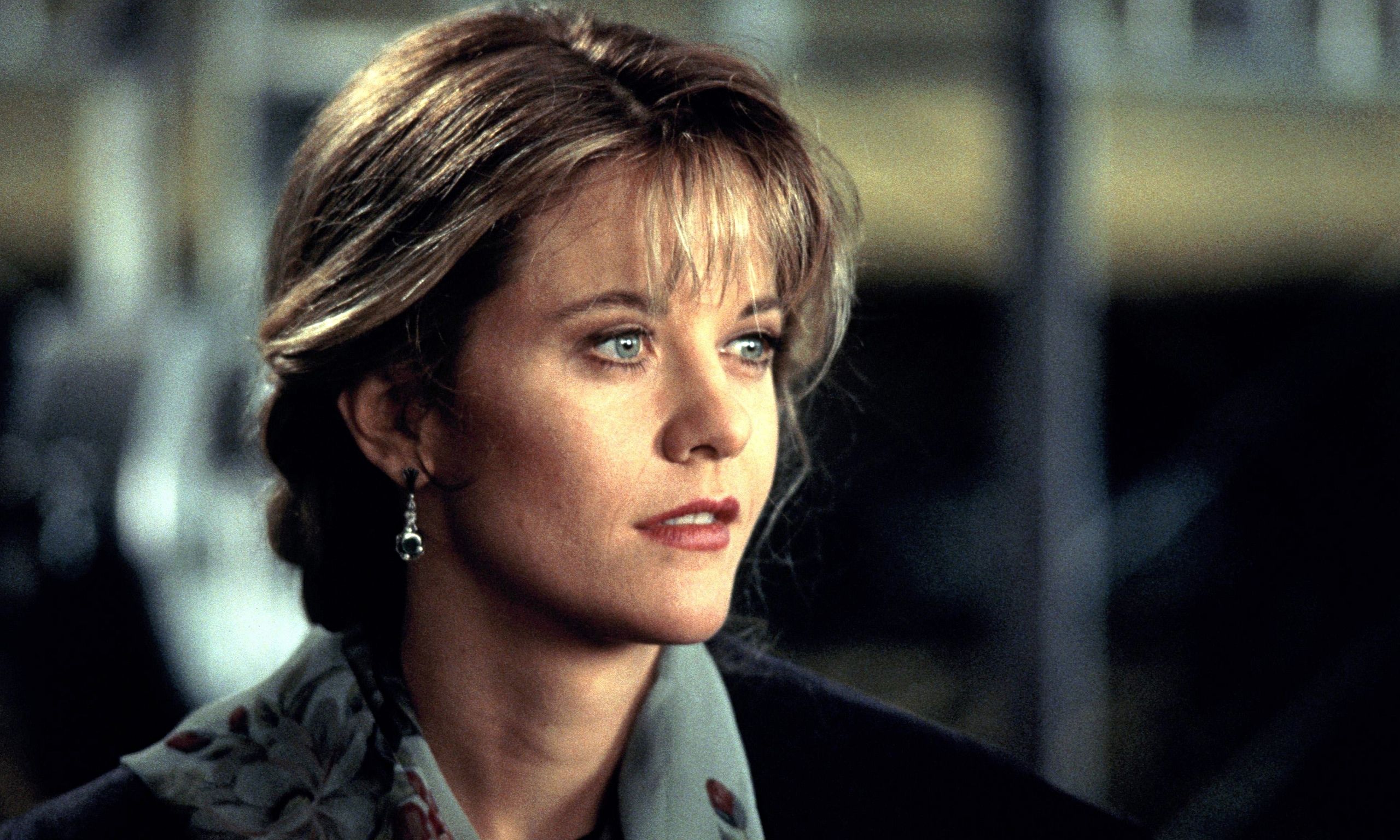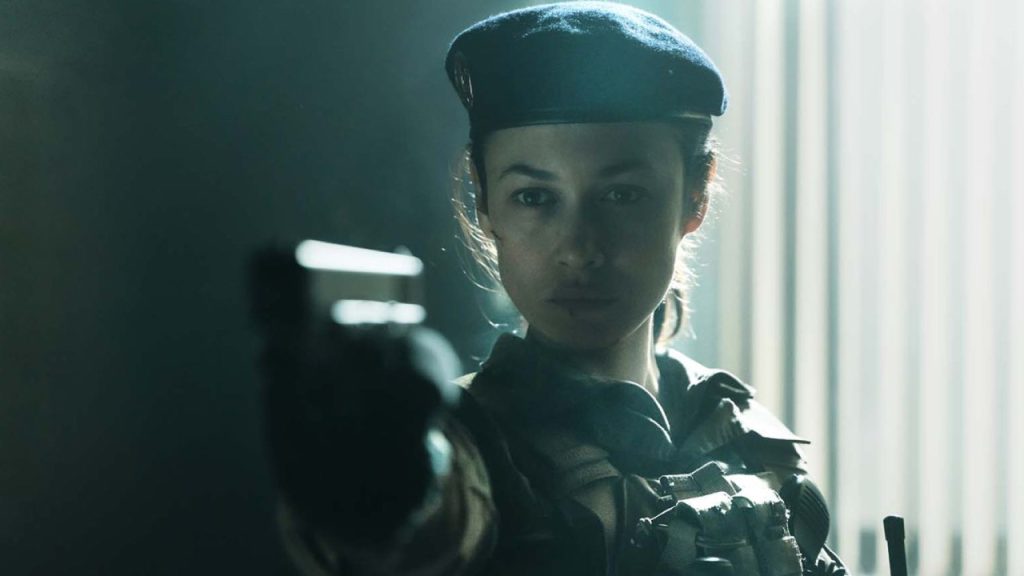Meg Ryan found her breakout role as Sally Albright in When Harry Met Sally. . ., a character Harry (Billy Crystal) accuses of being a cheerful person who “dots their I’s with little hearts.” Sally replies, “I have just as much of a dark side as the next person”; the same could be said of Ryan, whose star persona projects an affability that many mistake for her true self.
Meg Ryan didn’t intend to be an actress. She studied journalism in college and paid the bills acting in commercials. She left NYU a semester before graduating after landing a two year arc on As The World Turns. When asked how she wound up an actress, she replied, “sometimes your life seems to choose you a little bit.”
As a child of the ‘90s, my youth was defined by the holy trinity of the rom-com actresses: Julia Roberts, Sandra Bullock, and Meg Ryan. Roberts and Bullock have both kept going, winning Oscars for roles that set them against the rom-com America’s Sweetheart type that made their careers.
Ryan herself attributes the “vicious” criticism of her against-type role in Jane Campion’s In the Cut as a major turning point in her career. What’s so strange in retrospect is this was not as against type as it seemed. Before When Harry Met Sally. . ., Ryan played a gun-toting wild girl with pink hair in the 1987 indie hit Promised Land. Much was made of co-star Mark Ruffalo’s deflowering of Ryan in In The Cut, but her tits were out more than a decade earlier.
What’s more, for every crowd-pleasing ‘90s rom-com like Sleepless In Seattle, I.Q., or French Kiss, Ryan made dramas like The Doors, Courage Under Fire, and Flesh and Bone. Even within the rom-com genre she pushed boundaries – in her first outing with Tom Hanks, 1990’s Joe Versus The Volcano, she played three distinct, wholly realized characters. In 1992’s Prelude To A Kiss, she played a wide-eyed bohemian socialist who body-swaps with a brassy old man. She earned a Screen Actor’s Guild nomination, her only major accolade for a non-comedic role, as a recovering alcoholic in 1994’s romantic drama When A Man Loves A Woman. Years earlier Ryan helped her partner Dennis Quaid kick his cocaine habit. You can feel her authenticity in every choice she makes.

So why, with such a range, do we still think of her most fondly from her rom-com days? For me it’s comfort; there is just something incredibly cozy about a romantic comedy. The leads will meet-cute, there will be some obstacles, but by the end all will be well. In her films, not only do we get the comfort of knowing all will be well, we also get the beguiling pleasure of Ryan leading us to that happy ending.
Part of that pleasure is found in her voice. There is a warmth to it. She speaks with a distinct timbre. She tends to end her sentences with the emphasis rising; it’s melodic and mesmerising. She’s also a generous screen partner, full of empathy. Her frequent co-star Tom Hanks told Vanity Fair in 1995 that “she absorbs a lot,” and you can feel it. You see in her eyes that when a co-star is talking she is listening – really listening.
At the end of When A Man Loves A Woman, her husband (played by Andy Garcia) notes that she has 600 different kinds of smiles. In his review of You’ve Got Mail, Roger Ebert described her as having “more winning smiles than most people have expressions.” Even in a film as bleak as 1998’s Hurlyburly, Ryan is all smiles. In the Hollywood satire she plays an addict who uses her body to get what she wants out of life – namely drugs. This same exuberant energy we see in her rom-coms, subverted through the mania of addiction. Why do accept it when this energy is coming in the form of a rom-com heroine, and not a character we’re more likely to actually meet?
Following the media storm that was the dissolution of her marriage to Quaid, misattributed to an affair with Proof of Life co-star Russell Crowe, she made her last high profile rom-com, 2001’s Kate & Leopold. The cold reception of In The Cut followed. Then came one of her true missteps. Against The Ropes, a biopic of boxing promoter Jackie Kallen in which she seems to lose her trademark conviction. Ryan then goes through the motions in a string of ill-conceived comedies.
The one exception – The Women – had the misfortune of being released on the heels of the widely popular Sex and the City movie. Written and directed by Diane English, Ryan had been attached to play the lead for fifteen years. The film works when it’s trying to be its own thing, not re-create the magic of its 1939 namesake. Just as her character in the film, it’s clear Ryan is ready for a new phase in her life. As the film comes to an end she confides in her girlfriends that for her the real question is not can we have it all, but rather, do you want it?

Ryan was often compared to Doris Day. And like Day, when Ryan hit a certain age and fewer interesting projects came her way, she walked away from Hollywood. When asked about her departure in 2019, she told the New York Times, “I think the feeling with Hollywood was mutual. I felt done when they felt done, probably.”
Ryan left Los Angeles for New York the weekend her son Jack went off to college, choosing to spend her time raising daughter Daisy, whom she adopted in 2006. Fittingly, that the only two films she’s made since 2009 are about motherhood. The 2015 television film Fan Girl starring Kiernan Shipka (Mad Men, Chilling Adventures of Sabrina) is best left for competelists. Worth seeking out though is her directorial debut, the WW2-set Ithaca, an adaptation of the 1943 novel The Human Comedy by William Saroyan. Ryan cast Jack, now an actor like his parents, as a son sent off to war. While the film doesn’t always succeed, Ryan’s exploration of motherhood through a story about sons finds moments of true poignancy.
But what about the romantic comedies? Well, she’s currently at work on a rom-com script she hopes to direct. For her many fans, her presence in the genre is as comforting as a Nancy Meyers kitchen, her warmth and light allowing for a little escape. Describing her legacy as a comfort staple for people, she said “movies have funny places in people’s lives.”
In the denouement of City of Angels, Ryan’s character Dr. Maggie Rice tells fallen angel Seth (Nicolas Cage), “We were made to fit together.” That’s how it feels when you watch Meg Ryan on screen: it’s as if she was made for it. There’s a sincerity she brings to her performances that can’t be faked, an irrepressible confidence she imbues in them, and a light that she shines on those who share a scene with her. She’s got a beguiling spark that is hers and hers alone. Whether she returns to our screens again or not, we’ll always have the films she did make, and that’s better than an eternity without them.



